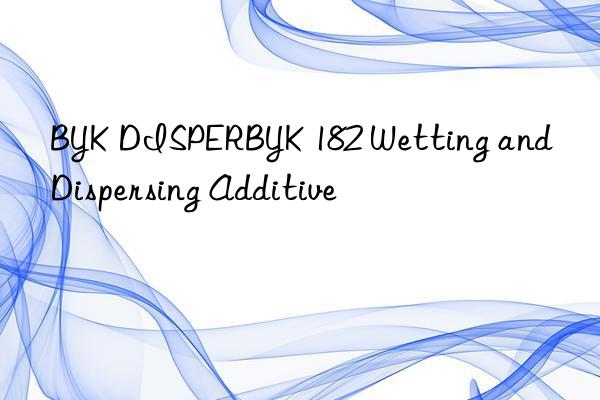
DISPERBYK-182
for aqueous and solventborne coating systems and printing inks Wetting and dispersing agent. Can be used with all pigments from non-polar to waterborne systems
Concentrated pulp.
Chemical composition
High molecular weight block copolymer containing pigment affinity groups Solution
typical materialized data
The data given on this data page are only typical values, is not a product specification.
| Amine Value | 13 mg KOH/g |
| Density (20 °C) | 1.03 g/ml |
| Non-volatile content (20 min., 150 °C) | 43 % |
| Solvent | Propylene Glycol Methyl Ether Acetate/Dipropylene Glycol Methyl Ether/Butyl Acetate 7/4/4 |
| Flashpoint | 38 °C |
Special reminder
The surface treatment of some organic pigments will affect the additive performance is adversely affected. In this case,try the same type of paint without treatment.
Application field
Paint Industry
Product Features and Benefits: DISPERBYK-182 Deflocculation of pigments by steric stabilization. Achieving a high glossdue to the small particle size of the deflocculated pigments ,Enhance color strength,Improve transparency or hiding power. Due to reduced viscosity, flow properties are improved, and pigment content.
Recommended use
DISPERBYK-182 Versatile,Suitable for solvent-borne and water-based systems. It can be used alone or with DISPERBYK-108 used together, used in production A more economical solvent-based pigment concentrate.
Recommended dosage
Auxiliary dosage(purchase form)Pigment based:
| Titanium dioxide | 2.5-5 % |
| Organic Pigments | 7-13 % |
| carbon black | 7-13 % |
The amount added is for reference, The optimum dosage should be determined through a series of experiments.
Joining method and processing guidance
For best performance,Auxiliary must be added to the mill first,Then add the pigment. Pre-mix the resin and solvent components in the millbase,Then slowly add the additives under stirring. Pigments should only be added after the additive has been completely dispersed.

 微信扫一扫打赏
微信扫一扫打赏

